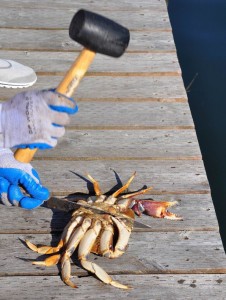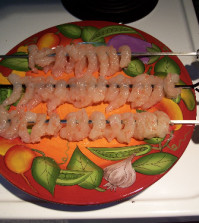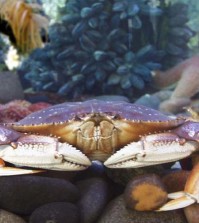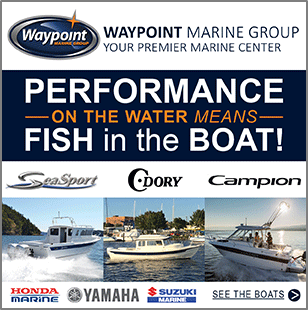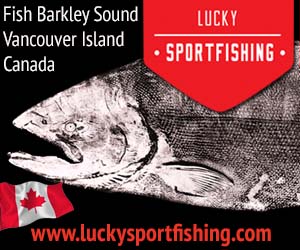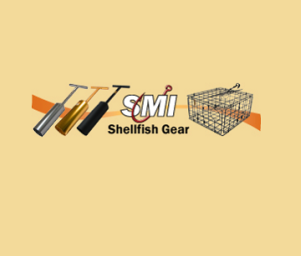Pot Fishing for Crab
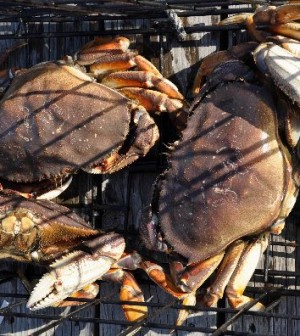
Those of us that are fortunate to live in the Pacific Northwest have access to one of the world’s prime seafood, the Dungeness Crab. They are a popular seafood delicacy and the most commercially important crab in the Northwest. Most commercially caught crab is exported all over the world, but especially to China.
In the past few years, the sports crab season has been expanded to give sport crabbers a better share of the seasons catch. Puget Sound anglers can now fish Thursday through Monday. Other areas, such as Marine Area 7 (San Juan Islands), the Columbia River and Pacific Ocean are open at different times, so be sure to check local regulations.
So, how do we catch these tasty creatures of the sea? Let’s start at the top. You are required to mark your sports pots with a red and white buoy. On the buoy, you are required to mark your name and address. Also add your phone # as in the case your pot is lost, there is the possibility the finder can get hold of you to return it. If you use just one buoy, you can eventually count on losing your gear, as a piece of kelp or a branch can quickly pull it under. Add flotation to your buoy by adding extra floats.
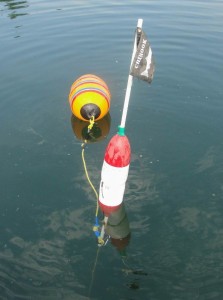 I personally use two buoys and mount them on a ½” plastic pipe (weighted on the bottom). This keeps my buoy upright and makes it easy to retrieve your buoys from the water. I also add another float so that a string of kelp or a branch can’t pull my setup under water.
I personally use two buoys and mount them on a ½” plastic pipe (weighted on the bottom). This keeps my buoy upright and makes it easy to retrieve your buoys from the water. I also add another float so that a string of kelp or a branch can’t pull my setup under water.
When fishing off a dock, drop your pot next to a piling. Big male crabs tend to back up next to them.
What kind of rope should I use? The best line is the leaded line, as it sinks quickly and stays off the surface, so that the prop of a passing boat doesn’t cut it off. Floating rope can also be used, but must have a weight attached to keep the rope out of passing boats props.
Allow at least 25% more rope than the depth you will be fishing. This will allow for tide changes, hang-ups on kelp or sliding off the edge of a drop-off.
Dungeness crab can be caught at almost any depth, but most anglers usually concentrate their pots in the 35’ to 85’ range. Be sure to keep them out of the boat traffic lanes.
Best Baits? Crab eat almost everything. However my top 3 baits would be:
– Thawed salmon carcass & salmon belly.
– Thawed turkey legs. When using turkey legs, be sure to slice them open to let the juices out.
– Horse Clams. Crab feed on clams all year. Be sure to crack the shells open before putting them in your bait box.
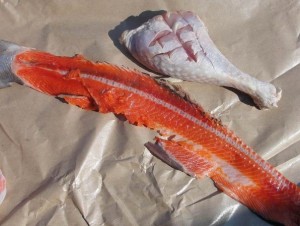 What kind of pot should I use? Almost all pots will work. My preference is a fairly inexpensive pot made by SMI (BeauMac), available at Outdoor Emporium, Sportco and other sporting goods outlets. Most importantly you need to weight your pot properly. Your pot alone will not hold in place in a strong tide. Adding 10 – 14 pounds of weight to your pot will suffice for most areas (preferably lead, cast iron, or a downrigger ball). Don’t use rebar unless it’s painted or covered in sealant. If you have strong current flows you may have to add more weight.
What kind of pot should I use? Almost all pots will work. My preference is a fairly inexpensive pot made by SMI (BeauMac), available at Outdoor Emporium, Sportco and other sporting goods outlets. Most importantly you need to weight your pot properly. Your pot alone will not hold in place in a strong tide. Adding 10 – 14 pounds of weight to your pot will suffice for most areas (preferably lead, cast iron, or a downrigger ball). Don’t use rebar unless it’s painted or covered in sealant. If you have strong current flows you may have to add more weight.
Where do I find Dungeness Crab? Look for sandy and small gravel areas, or along eel grass beds. If you find an area with a small stream entering, this is great, as that stream is constantly washing food into the area and attracts crab.
Since you are usually catching crab in fairly shallow water, you can pull your pot by hand. However, by the time you’ve added weight to your pot, plus crab and the water resistance on the crab as you bring them up, it’s a work-out. Either add a Scotty Trap-ease Pot Puller to your boat (click here to view YouTube demo) (low cost and very effective) or even more efficient, but also more expensive the Scotty Electric Line Puller (click here to view YouTube demo). You may want to add a Scotty Part # 2606 (6”) or Part # 2612 (12”) Pedestal Riser to make it easier to grab your pot. The “Brutus Ace Line Hauler is also a great electric line puller (click here to view YouTube demo). No gas fumes or hot mufflers with these electric pullers and excellent for those of us with ailing backs.
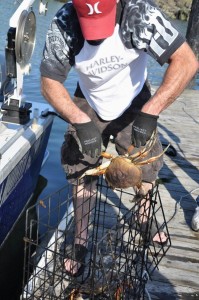 Do I clean them immediately after catching? Or cook them first?
Do I clean them immediately after catching? Or cook them first?
When removing the crab from your crab pot, immediately put your crab on ice – NOT in ice water. Frozen packets or bottles of ice will slow the metabolism of the crab (making them easier to handle) and keep them alive and fresh.
Grasp crabs by the two back legs and if possible squeeze them together – this will make the crab easy to handle. Don’t let the crab grab you!
The flavor of crab is much enhanced by cleaning them first. Also, what is commonly called “crab butter” (brownish, soft fluid under the shell) retains all the toxic chemicals as crab are bottom feeders.
Cleaning Crab the easy way. Lay your crab on its back. Take a sharp butcher knife and whack it with a rubber mallet. The crab is now in two pieces and no longer trying to pinch you. Now it’s easy to take the shell off, pull off the gills and wash out the crab butter.
Cooking Crab – When cooking crab, add ¼ cup of salt. Bring your water to a boil and then add the crab. After the water comes back to a boil, cook for about 14 minutes. Take your crab out and immerse them in Ice water. This will cause the cooking to stop and the meat to shrink away from the shell and make them easy to pick.